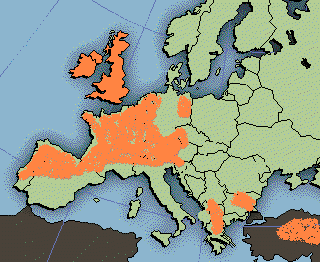The Celtic Empire |
|
Populations of Celtic descent in Europe are now concentrated on its western shores. They live chiefly in Brittany, Cornwell, Wales, Scotland, the Isle of Man, Ireland and the mountainous areas of France and Spain. During the period from about 11,000 to 2,000 years ago the Celts were responsible for building magnificent monuments (Stonehenge) and cities (Camelot) and were spread over a large part of the European continent (orange on map). In 278 BC one roving band penetrated as far east as Asia Minor where they gave their name to Galatia. Until the rise of Roman power the Celts were the conquering heroes and even sacked Rome in 385 BC. |
 The Celtic empire circa 300 BC |
 Celtic warriors and a cauldron of rebirth. Gold on silver circa 100 BC |
Constant bickering between the tribes eventually led to the empires downfall and Julius Caesar sought to restore Romes honour by conquering France and eventually parts of England between 59 and 49 BC. Until the official adoption of Christianity by the Roman Empire the Celts continued to worship in their own way, preserving their culture and legends in song and poetry. The poet was held in high esteem and is still feted at annual ceremonies in Wales. The influence of Christianity often meant the wholesale destruction of the Celtic heritage and the Rhunic writings. For some perverse reason the Celts in Ireland went against this trend and many of the stories and traditions were laboriously written down by monks in the 5th century. Ireland was also the leader in the production of beautifully illustrated manuscripts the most famous of which is the 'Book of Kells'. |
